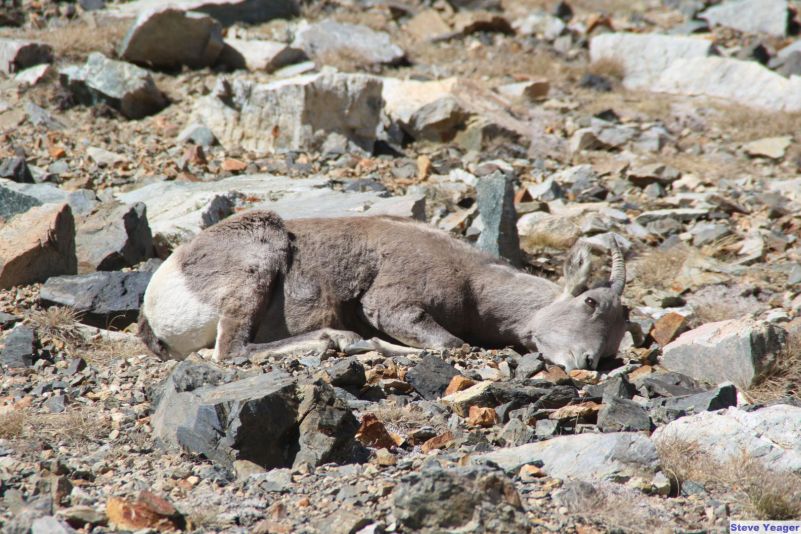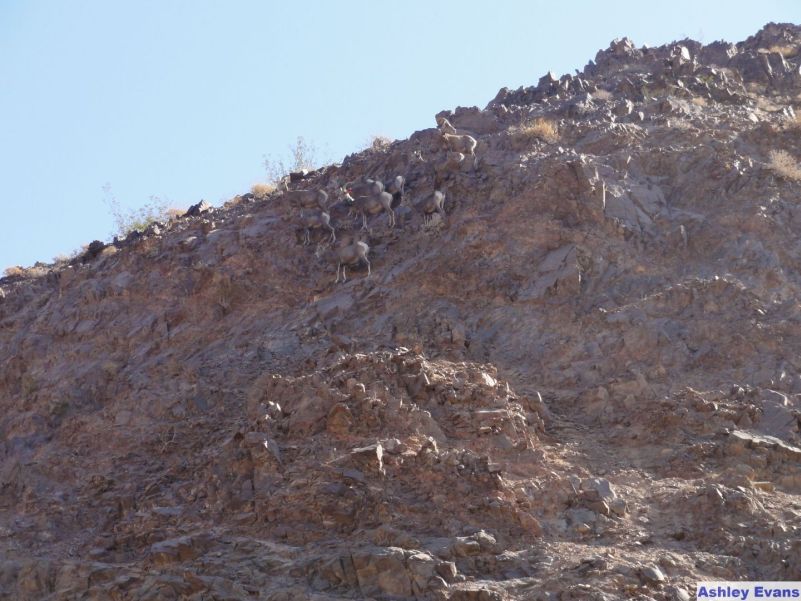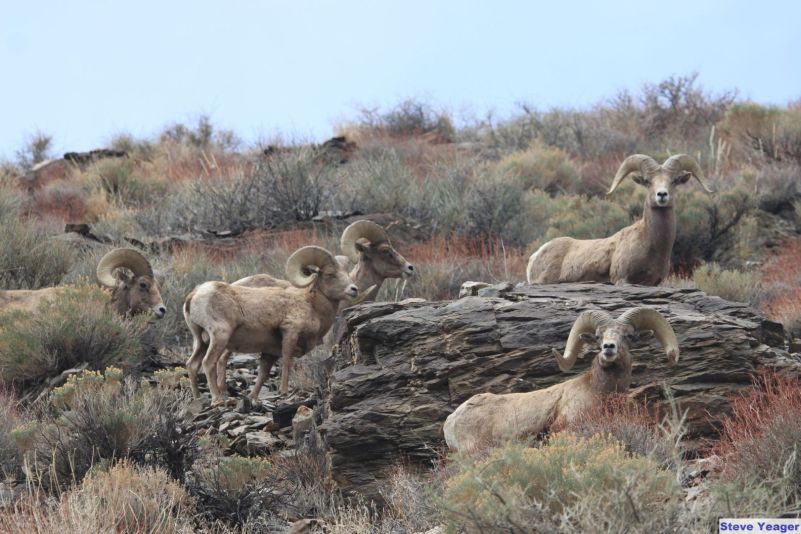Bighorn sheep exhibit seasonal changes in habitat use that reflect resource needs. The level of nutrient intake by bighorn sheep is determined by the availability of green, growing forage species. Following the first cool season rains, some females select south-facing slopes at lower elevations, where new forage growth first becomes available due to warmer temperatures. It may primarily be females closest to parturition that feed in those habitats because of elevated nutrient needs. In the absence of early rains and new growth on sloped habitat, females at the end of gestation may seek forage of higher nutrient content in low-lying washes.
Prior to parturition and for a few days after giving birth, bighorn sheep females sequester themselves on steep escape terrain that is safer from predators. Following the birthing period, groups of ewes with small lambs congregate in nursery groups and continue to occupy steeper habitat. Sometimes ewes will leave groups of lambs on safe terrain while they feed in less steep terrain. This steeper terrain used in the early lamb-rearing period is often referred to as lambing habitat. In some areas ewes even cross to a safer neighboring mountain range to bear and rear their lambs. However, where ewes rear their lambs can vary from year to year, likely depending in part on where the most nutritious forage is.
 A ewe relaxing in the sun. Photo by Steve Yeager.
A ewe relaxing in the sun. Photo by Steve Yeager.
 Locations of South Soda bighorn ewes in February and August 2016. These ewes selected habitat based on their environmental requirements, moving close to water in the hot, summer months and into a good forage area for the winter. Pictured on the center left of the maps is the East Cronise lakebed, which does not contain any water. CDFW map by Ashley Evans.
Locations of South Soda bighorn ewes in February and August 2016. These ewes selected habitat based on their environmental requirements, moving close to water in the hot, summer months and into a good forage area for the winter. Pictured on the center left of the maps is the East Cronise lakebed, which does not contain any water. CDFW map by Ashley Evans.
Habitat selection during the hot season is influenced by surface water. Females and associated bighorn typically begin shifting their distribution toward areas containing surface water in April or May depending on temperature, elevation, and the abundance and persistence of forage growth during spring. Regular use of water typically commences when daily high temperatures reach about 100F, and declines at the end of the hot season coincident with declining high temperatures, but may continue into winter if forage water content remains low due to lack of rain. During the heat of summer, females typically come to water to drink about once every three days, but that varies with temperature. Under very hot conditions bighorn sheep have been observed visiting water at night.
Male and female bighorn sheep tend to live in separate groups during much of the year and generally select different habitats. Desert bighorn females generally are found in steeper habitats with more escape terrain and fewer predators, not only in the lamb-rearing season. Habitat selection by males expands during the breeding season in summer and fall to more completely overlap habitats utilized by females.
 A ewe group in rocky, steep escape terrain. CDFW photo by Ashley Evans.
A ewe group in rocky, steep escape terrain. CDFW photo by Ashley Evans.
 A group of White Mountain rams. Photo by Steve Yeager.
A group of White Mountain rams. Photo by Steve Yeager.